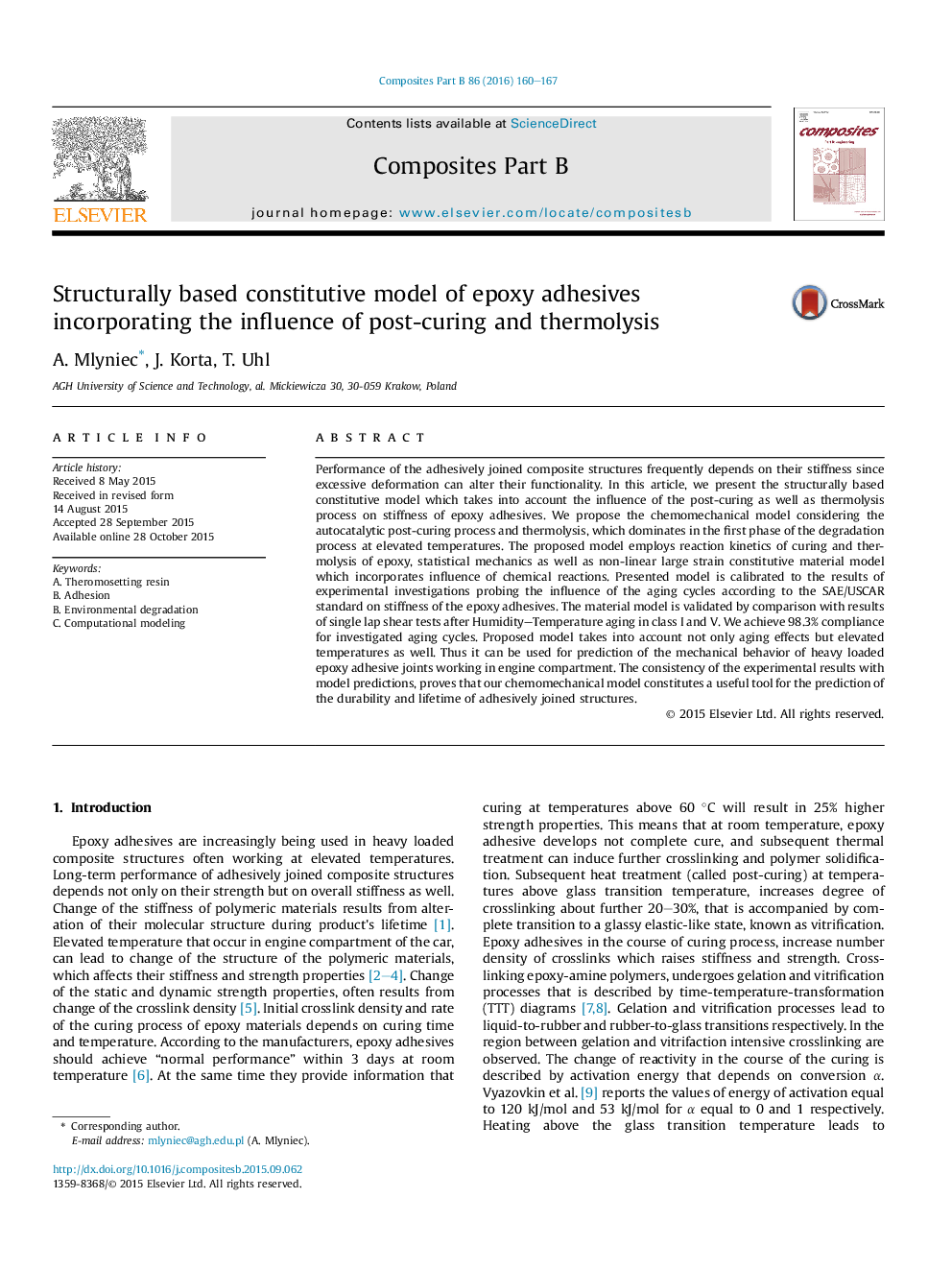| Article ID | Journal | Published Year | Pages | File Type |
|---|---|---|---|---|
| 817042 | Composites Part B: Engineering | 2016 | 8 Pages |
Performance of the adhesively joined composite structures frequently depends on their stiffness since excessive deformation can alter their functionality. In this article, we present the structurally based constitutive model which takes into account the influence of the post-curing as well as thermolysis process on stiffness of epoxy adhesives. We propose the chemomechanical model considering the autocatalytic post-curing process and thermolysis, which dominates in the first phase of the degradation process at elevated temperatures. The proposed model employs reaction kinetics of curing and thermolysis of epoxy, statistical mechanics as well as non-linear large strain constitutive material model which incorporates influence of chemical reactions. Presented model is calibrated to the results of experimental investigations probing the influence of the aging cycles according to the SAE/USCAR standard on stiffness of the epoxy adhesives. The material model is validated by comparison with results of single lap shear tests after Humidity–Temperature aging in class I and V. We achieve 98.3% compliance for investigated aging cycles. Proposed model takes into account not only aging effects but elevated temperatures as well. Thus it can be used for prediction of the mechanical behavior of heavy loaded epoxy adhesive joints working in engine compartment. The consistency of the experimental results with model predictions, proves that our chemomechanical model constitutes a useful tool for the prediction of the durability and lifetime of adhesively joined structures.
